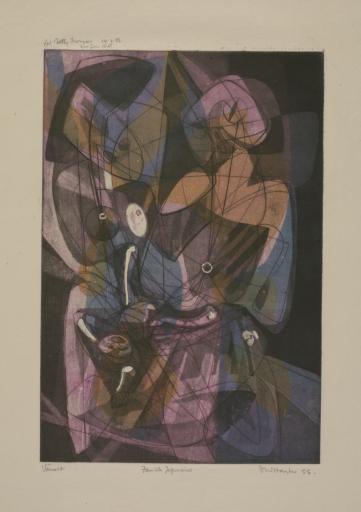Famille Japonaise, Stanley William Hayter
Artwork Overview
Stanley William Hayter, artist
1901–1988
Famille Japonaise,
1955
Where object was made: England, United Kingdom
Material/technique: stenciling; laid paper; soft-ground etching; color engraving; scorper
Dimensions:
Image Dimensions Height/Width (Height x Width): 356 x 242 mm
Sheet/Paper Dimensions (Height x Width): 640 x 500 mm
Image Dimensions Height/Width (Height x Width): 14 x 9 1/2 in
Sheet/Paper Dimensions (Height x Width): 25 3/16 x 19 11/16 in
Mat Dimensions (Height x Width): 32 x 24 in
Image Dimensions Height/Width (Height x Width): 356 x 242 mm
Sheet/Paper Dimensions (Height x Width): 640 x 500 mm
Image Dimensions Height/Width (Height x Width): 14 x 9 1/2 in
Sheet/Paper Dimensions (Height x Width): 25 3/16 x 19 11/16 in
Mat Dimensions (Height x Width): 32 x 24 in
Credit line: Museum purchase: Letha Churchill Walker Memorial Art Fund
Accession number: 2001.0001
Not on display
If you wish to reproduce this image, please submit an image request

